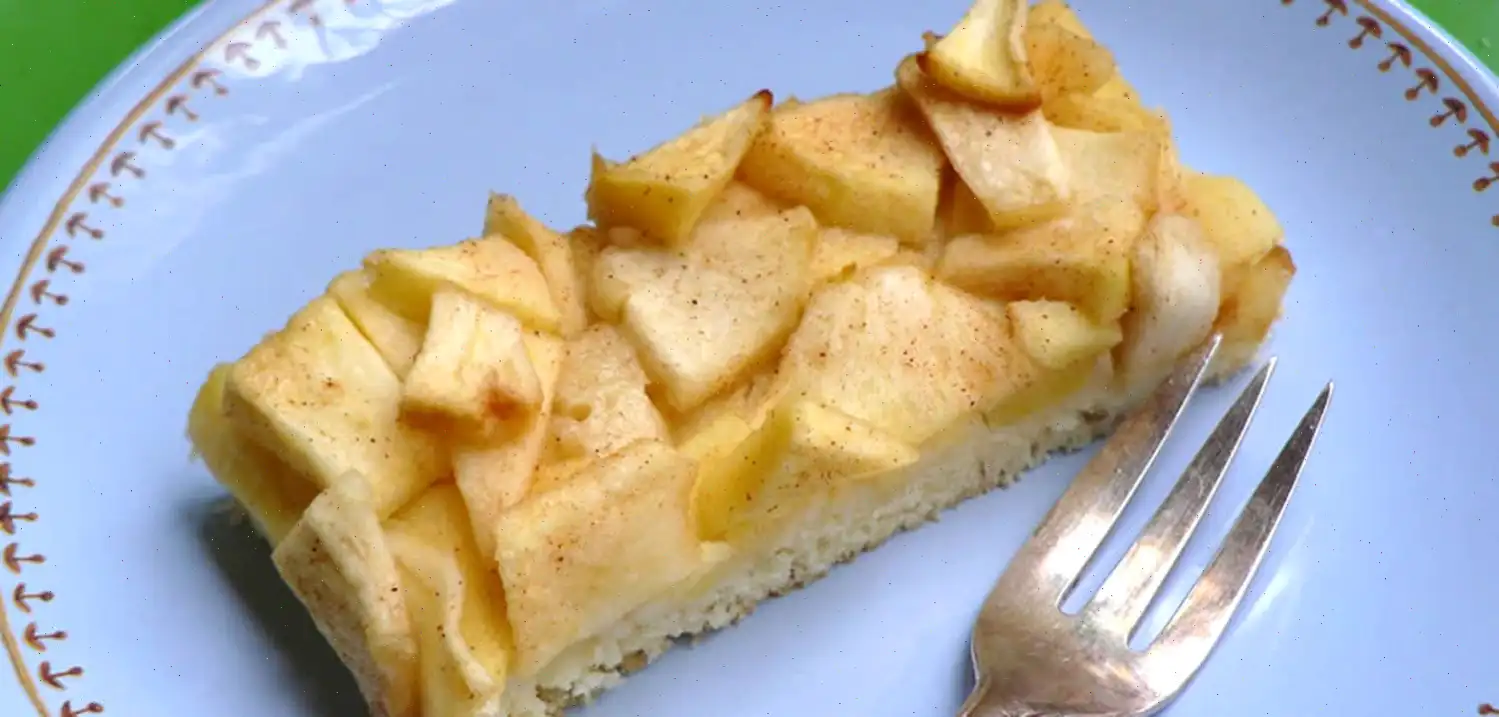
Limoncello Ricotta Cake Recipe
Ingredients
Cake:
- Cooking spray with flour
- 1 1/2 cups cake flour
- 1 teaspoon baking powder
- 1/2 teaspoon baking soda
- 1/2 teaspoon salt
- 3 large eggs, at room temperature
- 1 cup white sugar
- 15 ounces whole milk ricotta cheese, at room temperature
- 1/2 cup olive oil
- 1/4 cup limoncello
- 2 tablespoons fresh lemon zest
- 2 tablespoons freshly squeezed lemon juice
- 1 teaspoon vanilla extract
Icing:
- 1 cup powdered sugar
- 3 tablespoons limoncello
- 1 tablespoon heavy cream
- 2 teaspoons freshly squeezed lemon juice
- 1/2 teaspoon fresh lemon zest, or to taste
- 1 pinch salt
Directions
- Preheat the oven to 350F (180C). Spray a 9-inch springform pan with a baking spray containing flour.
- Sift together the cake flour, baking powder, baking soda, and 1/2 teaspoon salt. Set aside.
- In a large bowl, beat the eggs and sugar on medium-high speed for 5 to 7 minutes until the mixture lightens in color and triples in volume.
- Mix in the ricotta, olive oil, 1/4 cup limoncello, 2 tablespoons lemon zest, 2 tablespoons lemon juice, and vanilla extract until fully combined.
- Gradually add half of the flour mixture and mix until just combined. Then add the remaining flour mixture and mix until combined, being careful not to overmix.
- Pour the cake batter into the prepared springform pan, and place the pan on a baking sheet.
- Bake in the preheated oven for 65 to 75 minutes. Check doneness by inserting a toothpick into the center of the cake; it should come out with a few moist crumbs. If the top starts to brown too quickly, cover the cake with aluminum foil and continue baking.
- Cool the cake in the pan for 30 minutes before transferring it to a wire rack to cool completely.
- In a small bowl, whisk together the powdered sugar, 3 tablespoons limoncello, heavy cream, 2 teaspoons lemon juice, 1/2 teaspoon lemon zest, and a pinch of salt until smooth and well combined.
- Once the cake is fully cooled, pour the icing over the top, spreading it evenly.
For the Icing:
Nutrition Facts (per serving)
- Calories: 358
- Total Fat: 15g (20% Daily Value)
- Saturated Fat: 5g (24% Daily Value)
- Cholesterol: 66mg (22% Daily Value)
- Sodium: 242mg (11% Daily Value)
- Total Carbohydrates: 45g (16% Daily Value)
- Dietary Fiber: 0g (2% Daily Value)
- Total Sugars: 30g
- Protein: 7g (14% Daily Value)
- Vitamin C: 2mg (2% Daily Value)
- Calcium: 109mg (8% Daily Value)
- Iron: 2mg (10% Daily Value)
- Potassium: 81mg (2% Daily Value)
Cooks Note: If the top of the cake begins to brown too quickly, simply cover it with aluminum foil and continue baking until the cake is fully done.
This Limoncello Ricotta Cake is a delightful dessert that combines the refreshing citrus notes of limoncello with the creamy richness of ricotta cheese. The result is a moist, flavorful cake that is perfect for any occasion. Lets take a closer look at its origins, regional variations, and interesting facts about this delicious Italian treat.
Origin and History
The Limoncello Ricotta Cake is inspired by the traditional Italian flavors of the Amalfi Coast. Limoncello, a famous lemon liqueur, is native to southern Italy, particularly in the Campania region. The drink is made from the zest of Sorrento lemons, which are known for their intense, aromatic flavor. The cake itself brings together the bright citrus flavor of limoncello with the creamy texture of ricotta, a cheese that has been used in Italian cuisine for centuries.
While there are many variations of ricotta cakes in Italian cuisine, this particular version with limoncello is a modern twist, adding a unique depth of flavor. It reflects the Italian love for citrus, as lemons are a key ingredient in both drinks and desserts in the country.
Regional Features and Variations
Traditionally, ricotta-based cakes are common throughout Italy, especially in regions like Tuscany and Sicily. However, the addition of limoncello is specifically associated with the southern parts of Italy, where this famous lemon liqueur is produced. The cake can vary depending on the region, with some using different types of citrus fruits or adjusting the sweetness of the cake to suit local tastes.
In some variations, ricotta is mixed with other fruits such as oranges or berries, but the limoncello version stands out for its boozy, citrus-infused flavor profile. Its an ideal dessert for special occasions, combining the elegance of Italian desserts with the boldness of limoncello.
How It Differs from Similar Dishes
The Limoncello Ricotta Cake stands out from other citrus cakes due to its combination of two key ingredients: limoncello and ricotta. While lemon cakes and ricotta cakes are common in many cuisines, the addition of limoncello elevates the flavor, giving the cake a unique, fragrant kick. Most traditional ricotta cakes are sweet but may lack the complexity that the liqueur provides. Additionally, the texture of the cake is incredibly moist and tender, thanks to the ricotta cheese, which differs from the denser texture often found in cakes made purely from flour and eggs.
Compared to other lemon-flavored cakes, such as the classic lemon pound cake, this version has a more sophisticated and distinct flavor thanks to the limoncello, making it an ideal dessert for those who enjoy both alcohol-infused and citrus-based treats.
Where Its Typically Served
The Limoncello Ricotta Cake is often served as a special dessert in Italy, especially for celebrations or festive gatherings. It is a common sight at summer parties, weddings, and holidays, thanks to its bright citrus flavor, which pairs beautifully with the warm weather. In Italy, it is also enjoyed as an after-dinner treat, often served alongside a small glass of limoncello to complement the flavors. This cake can be found at many Italian restaurants and bakeries, especially those located along the Amalfi Coast, where limoncello is produced.
In the U.S. and other countries, it is gaining popularity as a dessert choice for gatherings, particularly for those who enjoy unique flavors or Italian-inspired cuisine.
Interesting Facts
- Historic Limoncello: Limoncello dates back to the early 1900s in Italy, and its exact origins are debated. Some say it was created by a family on the Amalfi Coast, while others attribute it to the island of Capri.
- Ricottas Ancient Roots: Ricotta cheese has been made for over 2,000 years. Its name comes from the Italian word "recotta," meaning "re-cooked," referring to the process of reheating whey to make the cheese.
- Perfect Pairing: The combination of limoncello and ricotta is a match made in Italian dessert heaven. The rich and creamy texture of the ricotta pairs wonderfully with the sharp, tangy sweetness of limoncello, making each bite a burst of flavor.
- Versatility: While this cake is typically served as a dessert, it can also make a refreshing addition to a brunch spread or an afternoon tea. It pairs beautifully with a cup of espresso or a light white wine.
This Limoncello Ricotta Cake brings a slice of Italy to your table. Whether you're hosting a summer gathering or simply craving a deliciously unique dessert, this cake is sure to impress with its perfect balance of rich, creamy texture and bright, citrusy flavor.
You can listen to this recipe in AI audio format. Simply click the play button below to listen to the content in a format that suits you best. It’s a great way to absorb information on the go!
FAQ about Limoncello Ricotta Cake Recipe
Comments
oldiehawn
10/06/2025 01:52:54 PM
Easy to make, super moist and overall a good cake. Not sure how much the Lemoncello added considering how much it cost. I will be making this again but using more lemon juice and less Lemoncello.
Kathleen F
12/04/2023 06:28:25 PM
Super moist and delicious! Everyone wanted seconds. Icing does run off if you don’t wait until the cake cools to ice it.
Wendy
11/10/2024 05:59:16 PM
Could have a stronger lemon flavor. Maybe I did something wrong on my first try. I will definitely try again and will add more lemon
FriskyYuzu2808
11/05/2024 05:42:03 PM
it was the best and just add a little more lemoin
SilverSieve2340
12/14/2024 10:16:53 PM
Just put my 3rd one in the oven! I love it and have a friend who is a professional baker and he has raved about it!
Edward Phillips
02/25/2024 03:44:56 AM
Made it and I feel like a culinary king.
BrightSoy6697
02/12/2024 02:45:27 PM
I didn't have enough limoncello. It was ok. Icing ran off of cake. Wouldn't make again.
AcePop1478
12/28/2023 03:53:08 PM
Oooh!
LoftyPho7256
12/25/2023 01:50:32 PM
This was easy to make and had a great lemon flavour. I was afraid it would be too sweet but that wasn't the case.
Mary Bower
12/16/2023 01:53:04 PM
It is easy and so Delicious. Very moist and flavorful. The best Cake I've ever made!!
warreen
12/05/2023 04:26:15 PM
A little involved to make, but worth it! And I used gluten free flour because my husband is a celiac person.
Robin Walker
12/04/2023 02:41:59 AM
The most delicious lemon dessert I've ever had!!!
PlumDough6513
11/28/2023 04:18:23 PM
If you like lemon, you're going to want to add 1-2 Tbsp extra lemon juice to the batter. Either way, it's a delicious cake!








